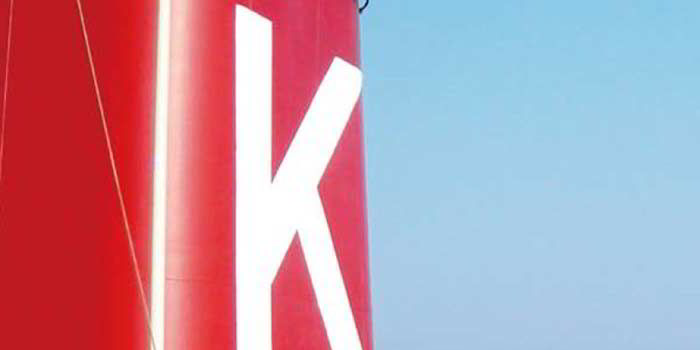Net income for the quarter to the end of June rose to JPY 10.2bn ($83.25m) more than double the JPY 4.3bn of the comparable period of 2014.
Operating revenues rose by nearly 5% to JPY 335bn for the quarter with K Line attributing the improvement to a gradual upturn in both the Japanese and global economies.
Revenues for K Line’s core liner business was up 8.4% at JPY 172bn with income almost doubling to JPY 4.1bn.
The other big earning division, bulk shipping, reporting a 1.8% increase to JPY 146bn.with income 62% up at JPY 10.4bn.
K Line reported cargo volumes on Asia – North America round trip voyages increased 9% year on year reflecting economic recovery but Asia – Europe volumes were down 11% as shipper demand decreased against a background of uncertain consumption trends.
Container freight rates in the Asia – North America trade were stable with K Line benefited from cost savings as a result of slow steaming and lower bunker prices.
The freight rate trend in the Europe and South American trade is described as “dull” with K Line highlighting the impact of large new vessels being delivered.
K Line is looking forward to strengthening its own East – West trade competitiveness with the launch of five energy efficient 14,000-teu newbuildings.
The dry bulk business was affected by continuing capacity oversupply, low freight rates and Chinese economic growth slackening.
K Line’s car carrier business volumes were down by 2% but revenues and income rose reflecting the benefit of efforts to improve cost efficiency.
The LNG, LPG and VLCC operations performed steadily as a result of medium and long term charters. Revenues from both LNG carriers and tankers increased on a year on year basis.
K Line said it would continue to aim at balancing stability and growth and planned to pay a dividend of JPY 5 per share for the financial year to the end of March 2016.
With a fleet of more than 660 vessels of 43m dwt K Line is one of the top Japanese shipowners. The fleet includes 75 containerships, 472 dry bulk and car carriers as well as 50 tankers and other vessels involved in energy shipping.


